The SNC Landscape
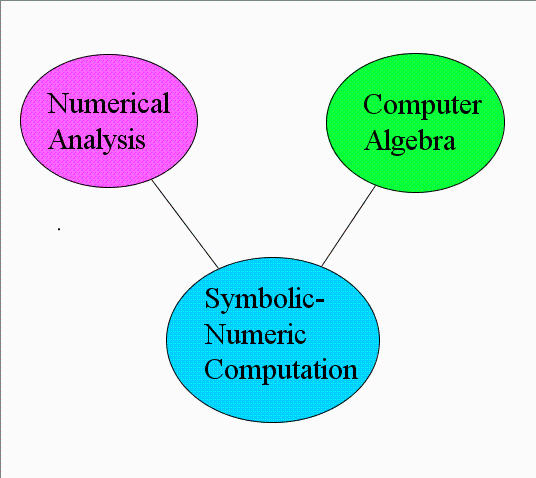
- Numerical Analysis: Approx. 1950 to the present
- Computer Algebra: Approx. 1960 to the present
- Symbolic-Numeric Computation: Approx. 1990 to the present
Approximate Timelines
- 1970s: Numerical Analysis
- PhD Thesis, Algorithms for Analytic Approximation, 1973
- My 1970s papers primarily in Numerical Approximation
with particular interest in
- Chebyshev series
- Chebyshev-Pade approximation
- Clenshaw-Curtis quadrature - 1980s: Computer Algebra
- The Maple project, started about November 1980
- Textbook, Algorithms for Computer Algebra (Geddes, Czapor, Labahn),
publication date 1992 - 1990s and 2000s: More emphasis on Symbolic-Numeric Computation
- Numerical integration using symbolic analysis,
incorporated into Maple's numerical integration facility
- Recent work with former PhD student Fred Chapman
on bivariate approximation
also numerical multidimensional integration
My Personal Timelines

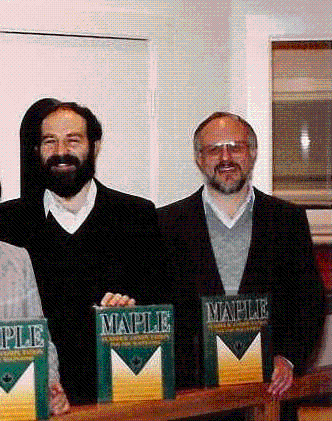
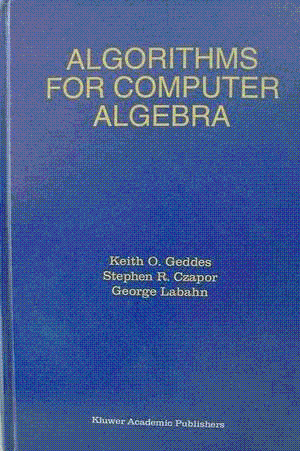

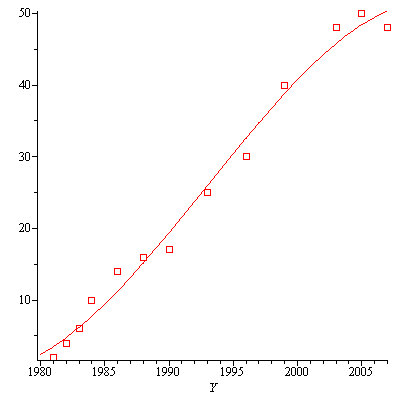
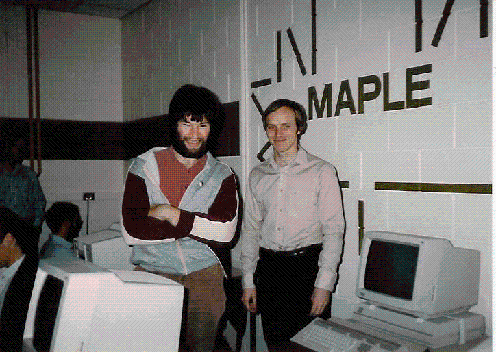
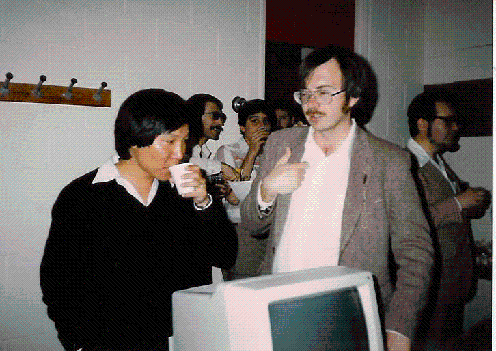


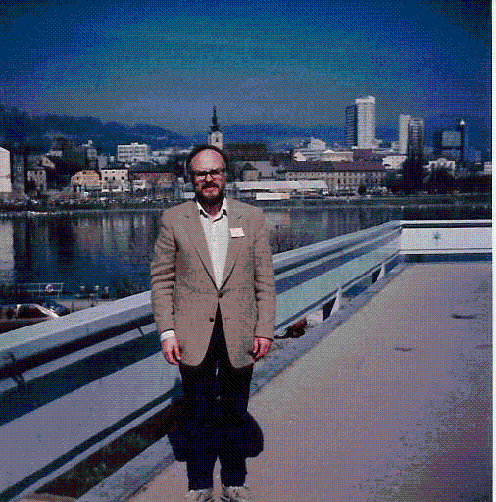
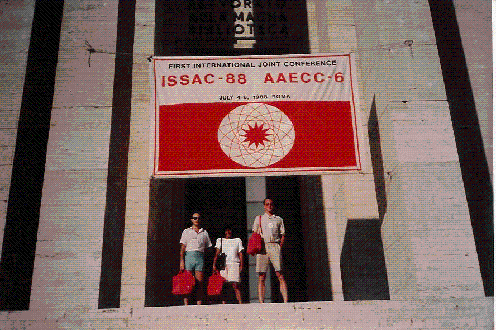 ISSAC '88 in Rome -- the first to be named "ISSAC"
ISSAC '88 in Rome -- the first to be named "ISSAC"  Rome 1988
Rome 1988 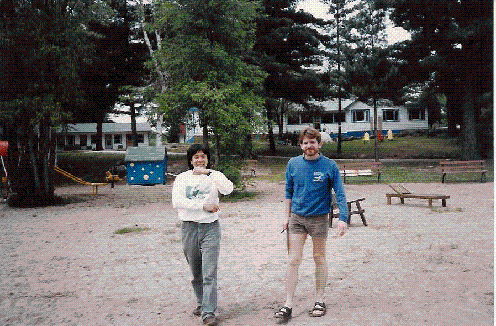 Bruce Char and Mark Mutrie, Maple Retreat 1989
Bruce Char and Mark Mutrie, Maple Retreat 1989 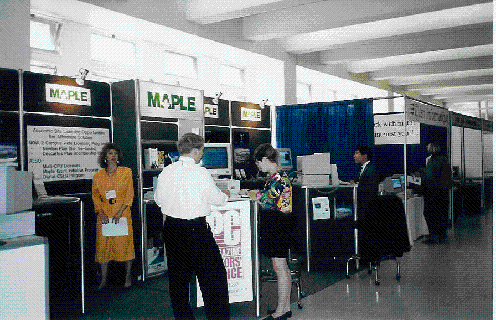 Maple booth, NCTM 1992, Quebec City
Maple booth, NCTM 1992, Quebec City 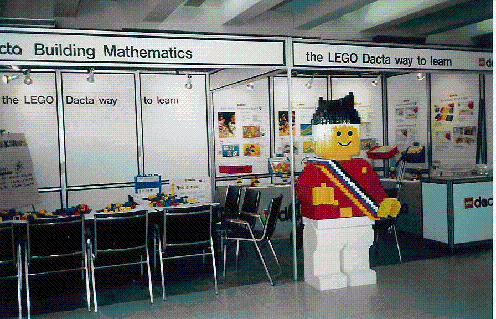 A view of the competition, NCTM 1992, Quebec City
A view of the competition, NCTM 1992, Quebec City  Stephen Watt and I with hosts, Kiev 1993
Stephen Watt and I with hosts, Kiev 1993  Kiev 1993
Kiev 1993 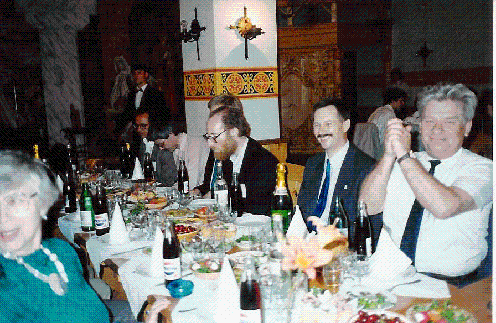 The vodka banquet, Kiev 1993
The vodka banquet, Kiev 1993  W. Kahan, K. Geddes, D. Jeffrey, G. Labahn, Ha Le, Maple Retreat 1994
W. Kahan, K. Geddes, D. Jeffrey, G. Labahn, Ha Le, Maple Retreat 1994 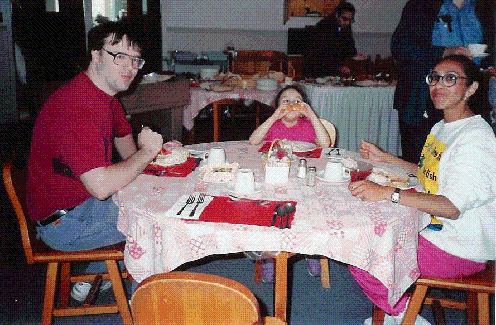
 Erich Kaltofen with Allan Bonadio and ??, Maple Retreat 1994
Erich Kaltofen with Allan Bonadio and ??, Maple Retreat 1994 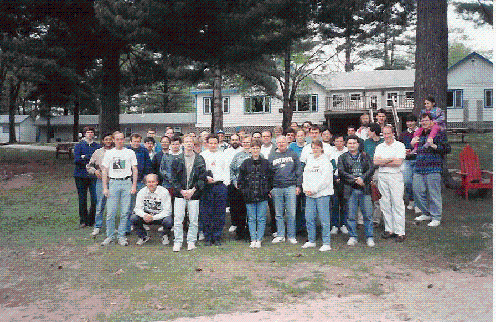 Group picture, Maple Retreat 1994
Group picture, Maple Retreat 1994 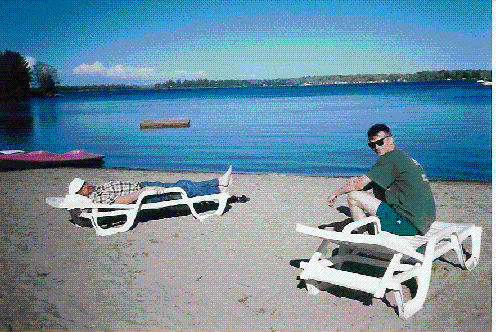 Hard at work at the Maple Retreat, Sparrow Lake, Ontario, 1997
Hard at work at the Maple Retreat, Sparrow Lake, Ontario, 1997 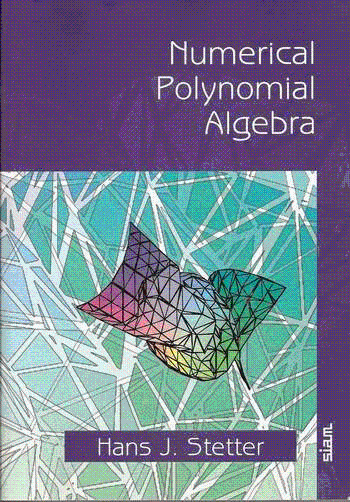
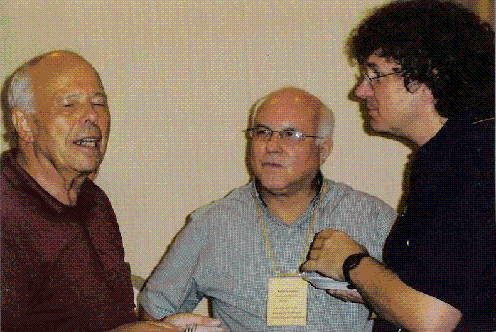 Hans Stetter, Keith Geddes, Stephen Watt, 2005
Hans Stetter, Keith Geddes, Stephen Watt, 2005